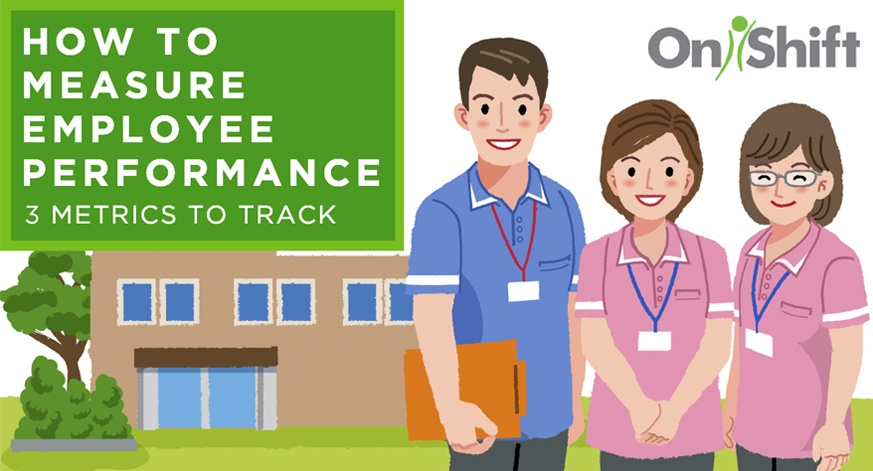February 15, 2018 | Peter Corless
February 15, 2018 | Peter Corless
 For long-term care and senior living organizations, providing the best care and services starts and ends with their employees. But how can you measure employee performance without micromanaging staff?
For long-term care and senior living organizations, providing the best care and services starts and ends with their employees. But how can you measure employee performance without micromanaging staff?
The best organizations and managers have a system in place to track employee performance. Every organization will do this differently, but there are few universal metrics to track and examine. These measures can help shape employee reviews by highlighting individual successes and areas that might need additional coaching.
Here are three measures to examine when evaluating employee performance at your organization.
No. 1: Resident & Family Feedback
Being a caregiver is a demanding position, but the right attitude and work ethic go a long way toward ensuring success.
That’s why resident and family member feedback is crucial when gauging employee performance. Different senior care organizations will have unique ways to measure resident care, though one common method is to collect feedback from residents, their families and other team members. Resident feedback, in particular, can provide a clear picture of the individuals who go above and beyond when helping residents.
And negative feedback is just as clear an indicator. If caregivers are not making it a priority to provide quality care, managers need to take immediate action and work with employees to create a performance improvement plan that stresses the importance of doing so.
No. 2: Employee Attendance Patterns
Attendance is often the most significant measure of any employee’s performance. Key attendance performance indicators include:
It’s up to each organization to set attendance standards and the time frame for these measurements. Written guidelines should be in place that indicate how many times an employee can punch in late before a verbal and/or written warning is issued; though ideally, this shouldn’t occur often. Your HR department and managers should also decide if employees are allowed a certain number of call-offs monthly, quarterly or annually and track to those standards.
Engaged and happy employees will show up on time and when scheduled, while those who are late or frequently call-off at the last minute, should raise red flags for management.
No. 3: Intra-Organization Interactions
Interactions with other employees is another metric that should be considered when assessing an individual’s workplace performance. Here are a few questions managers can ask:
Interactions with co-workers are important because they can help indicate an employee’s involvement, comfort level and engagement in the workplace. Furthermore, little to no interaction with managers and colleagues could be a sign of disengagement. Research has shown that employees who report having a friend at work are more likely to stay long term.
Employee performance is a key indicator of employee engagement and when monitored closely and dealt with appropriately, can prevent turnover. Quick and convenient pulse surveys are an excellent way to track employee satisfaction and provide an outlet for feedback. OnShift’s employee engagement software also provides performance dashboards to help management easily keep track of these employee performance indicators.
Measuring performance shines a light on staff members who go above and beyond, while also providing valuable insight into individuals who may need coaching or may not be a good fit for the senior care profession. A company is only as successful as its workers, and those who are satisfied tend to perform better. And as we all know: happy employees equals happy residents.
Subscribe to the OnShift Blog
Recent Posts
Categories
About Peter Corless
Peter Corless is Executive Vice President of Enterprise Development for OnShift. Peter is a recognized HR leader in post-acute care and is well-known for his achievements at some of the country’s largest post-acute care organizations, including Kindred Healthcare and Genesis HealthCare. As an experienced, chief administrative and human resources officer within these organizations, he developed strategies that reduced turnover, improved recruiting and hiring strategies, and reduced labor costs.
See for yourself why thousands of providers rely on OnShift’s innovative software for recruitment, hiring, workforce management, pay and engagement. Request your personalized demo today.
